Porsche Taycan – The Story
"A game changer"
The Story / Timeline / Model Guides / Research / Pictures & Videos / FAQs / Updates & News
Type: 9J1
Generation: First Generation
Manufacturer: Porsche AG
Production Years: 2019 - Present
Model Years: 2020 - Present
Designer: Michael Mauer
Body Style: 4-Door Sedan, 5-Door Shooting Brake (Cross Turismo)
Layout: Rear-motor, rear-wheel drive (Taycan), Dual-motor, all-wheel drive (Taycan 4S,Turbo & Turbo S)
Platform: J1
Engines: 2× AC synchronous electric motors, front and rear axle powered by e-tron)
Official photos: Turbo & Turbo S September 4, 2019, 4S October 14 2019
Premiere: September 4, 2019 for invited quests in Germany, China and Canada, publicly September 12, 2019 at IAA Frankfurt motor show
Market launch: Turbo & Turbo S September 2019, 4S January 2020
Porsche all-electric sports sedan has the specs and techs to make even petrol-obsessed gearheads drool. Porsche invested six billion euros in investments and added 1,200 new employees for the launch of the Taycan alone. The entire company is firmly committed to electric mobility so Porsche (as a company) went through a process of major change to deliver a car built to slingshot it into the electric future.
Make no mistake, the Porsche Taycan is a monumental step for the company, a battery-powered, zero-emission sport sedan that drives like a Porsche, is insanely quick and is arguably one of the best Porsche cars ever made. The low-slung four-door arrived in two versions - the base model Turbo and specced up Turbo S - with the kind of stats that impress any car fan. Think 0 to 60 in 2.6 seconds in the S, along with 750 horsepower. But the Taycan also delivers on Porsche’s reputation for engineering prowess by pushing electric driving tech forward in all sorts of ways. The Taycan uses an industry-first 800-volt battery, which allows for smaller cabling than the standard 400-volt system, making the car lighter. That also enables extra fast charging: The 93.4-kWh battery can be filled to 80 percent is just 22.5 minutes, using one of the high-speed chargers Porsche is installing at dealerships around the country.
For performance enthusiasts, that comes down to handling and responsiveness. Chassis engineer Ingo Albers points to the new all-wheel-drive system, which scraps a central system in favor of putting control within each of the dual motors. That saves milliseconds of delay as the wheels communicate with the controller and the controller sends instructions back. “It's faster, it's smoother, and the performance is better,” Albers says. “The traction control is up to 10 times faster than on a normal Porsche.”
The Taycan will feel more nimble and agile than Porsche’s other sports sedan, the Panamera, Albers says. Better balanced, too, since its weight is concentrated in its middle. The powertrain called for a compromise between efficiency and ferocity, resulting in Porsche’s development of an industry-first two-speed gearbox. Manufactured in-house, it’s attached to the rear motor only and provides for both brisk low-end acceleration and a higher top-end, at 161 mph, while still being efficient when it needs to be, for highway cruising and the like. This is one technically sophisticated automobile.
Since its launch, Porsche has really rolled out the variants. We have see the base Taycan and the introduction of the Cross Turismo (wagon) body. In typical Porsche fashion, we now have the Porsche Taycan, Porsche Taycan 4S, Porsche Taycan Turbo, Porsche Taycan Turbo S, Porsche Taycan 4 Cross Turismo, Porsche Taycan 4S Cross Turismo, Porsche Taycan Turbo Cross Turismo and Porsche Taycan Turbo S Cross Turismo.
The 2025 update to the Porsche Taycan was a comprehensive mid-cycle refresh aimed at addressing range anxiety, improving efficiency, and sharpening performance to keep the model competitive in a rapidly evolving EV landscape. While retaining the same basic J1 platform, Porsche reengineered the Taycan’s motors, battery, and thermal systems to deliver up to 35% more range, significantly quicker acceleration across the lineup, and faster charging—with peak DC rates rising to 320 kW, enabling a 10–80% top-up in just 18 minutes. Subtle design tweaks modernized the exterior, while the interior gained enhanced tech and a streamlined user interface. Altogether, the 91J update made the Taycan faster, smarter, and more efficient—cementing its place at the top of the performance EV market.
The Porsche Taycan’s journey began in 2020 as a bold new chapter in the brand’s storied performance legacy—its first fully electric production car and a clear statement of intent in the EV era. Then, in 2025, Porsche introduced the first major refresh of the Taycan, with lots of hardware and software updates across the range.

Built on the new J1 platform, the Taycan launched initially as a sleek, four-door sedan with the Taycan Turbo and Taycan Turbo S leading the charge, both offering blistering straight-line performance and dual-motor all-wheel drive. Shortly after, Porsche introduced the Taycan 4S, striking a balance between everyday usability and performance. In 2021, the lineup expanded further with the addition of a more affordable rear-wheel-drive base model Taycan, which retained the dynamic handling DNA but came at a lower price point and with slightly less complexity and weight.
By mid-2021, Porsche diversified the Taycan family with the introduction of the Taycan Cross Turismo—a wagon-style variant that added more cargo space, standard all-wheel drive, and mild off-road aspirations with increased ride height and rugged cladding. The Cross Turismo models were mechanically similar to their sedan counterparts, offered in 4, 4S, Turbo, and Turbo S trims. In 2022, Porsche added the Sport Turismo to the mix. This variant shared the wagon body of the Cross Turismo but with the sedan’s lower ride height and sharper on-road focus. Meanwhile, throughout these early years, Porsche steadily improved the Taycan via software updates that refined range estimates, charging speed, and driving behavior, though the hardware remained largely unchanged through 2024.
Despite critical acclaim, there were challenges. The earlier Taycans, while blisteringly quick and beautifully engineered, were often scrutinized for their relatively modest EPA range figures compared to Tesla’s offerings. Yet real-world owners and testers frequently praised the Taycan for its consistent performance, precise handling, and exceptional build quality. The Taycan quickly became a benchmark for how a performance EV should feel behind the wheel. By 2024, the lineup had matured to offer a flavor for nearly every buyer—from minimalist performance in the base RWD sedan to hypercar-level thrust in the Turbo S Cross Turismo.
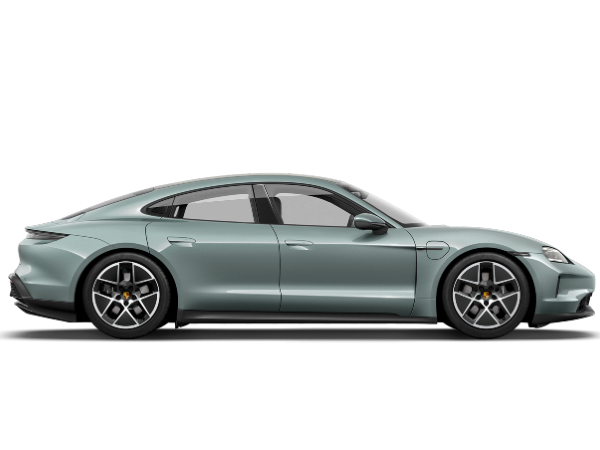
Then, in 2025, Porsche introduced the first major refresh of the Taycan, known internally as the 91J update. While the core J1 architecture remained, nearly every component that mattered—from motors to battery management to charging hardware—was improved. The motors were more efficient, the battery packs were lighter with greater usable capacity, and the thermal management system was optimized for real-world conditions. The result was up to 35% more range in some variants, quicker acceleration times, and faster charging—up to 320 kW on compatible DC fast chargers, allowing 10–80% top-ups in under 18 minutes.
The 2025 Taycan lineup included the familiar range of models—Base Taycan, Taycan 4, 4S, GTS, Turbo, and Turbo S—but introduced a new flagship: the Taycan Turbo GT. Designed for extreme performance, the Turbo GT featured enhanced aero, a stripped-down interior, and a track-ready calibration that allowed it to lap quicker than most internal-combustion supercars. Additionally, the Turbo GT with Weissach Package took things further by eliminating the rear seats and maximizing weight savings, making it the most hardcore Taycan ever. All 2025 models benefited from sharper styling with revised front and rear designs and updates to the interior tech and user experience.
With this second phase of the Taycan's life, Porsche has fully realized the car’s original promise—delivering not just a great EV, but one that evolves in line with the brand’s relentless pursuit of driving excellence. The 2025-onward Taycan models are faster, more efficient, more comfortable, and better connected. But perhaps most importantly, they reinforce what the Taycan set out to prove in 2020: that an electric car can deliver the soul and precision of a true Porsche.
The sexiest Porsche in a generation. Yeah, we said it. See for yourself.
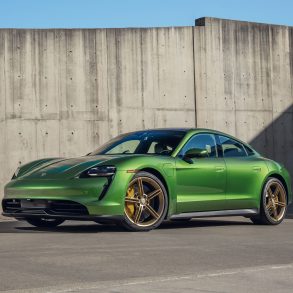
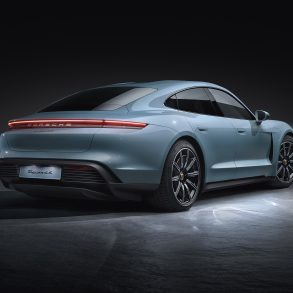


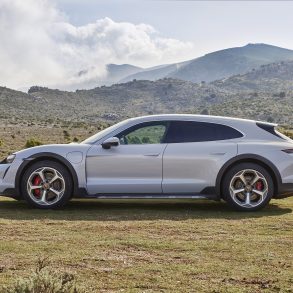
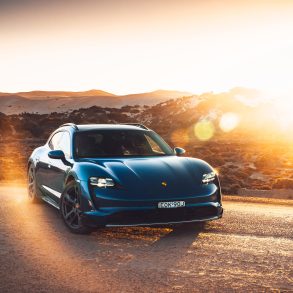
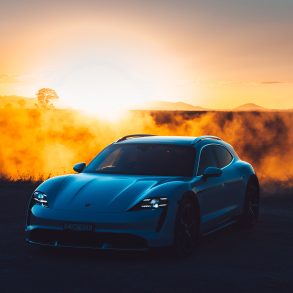
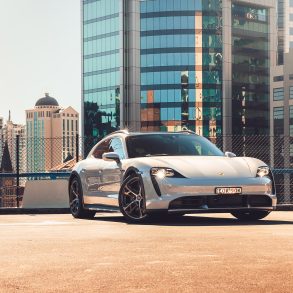
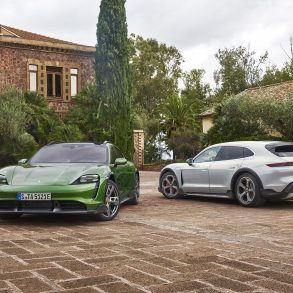
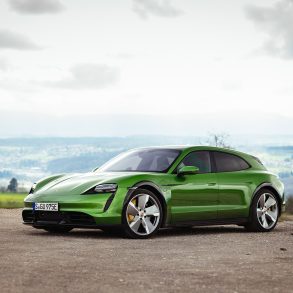

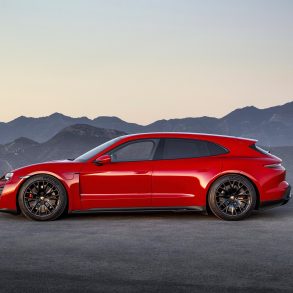
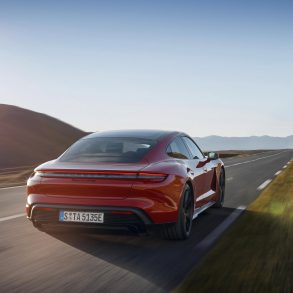
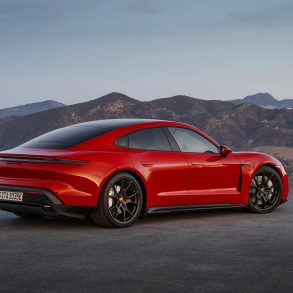
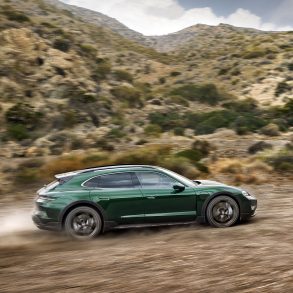

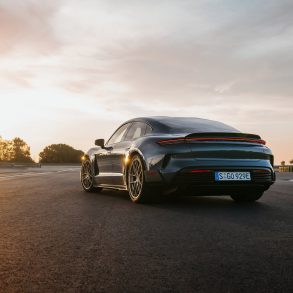

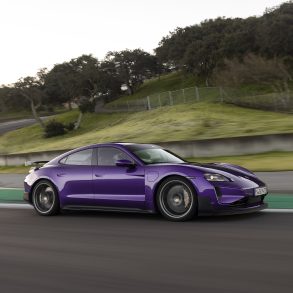
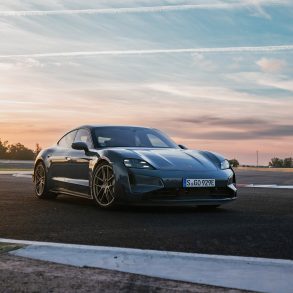
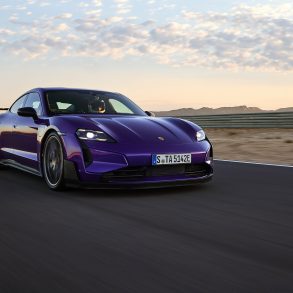

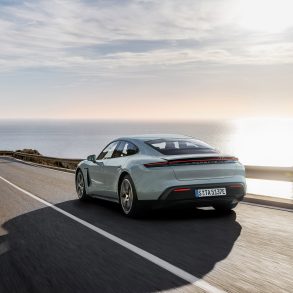
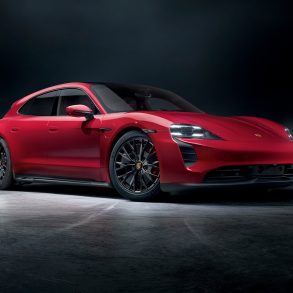

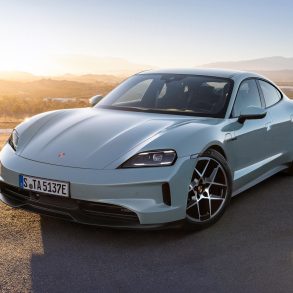
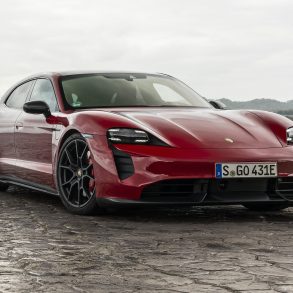


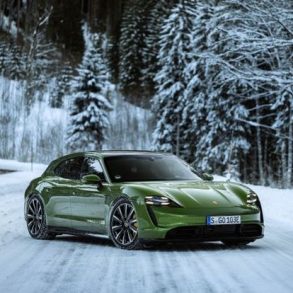
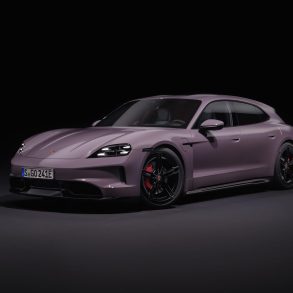
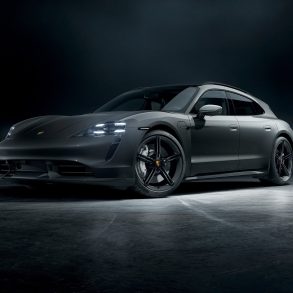
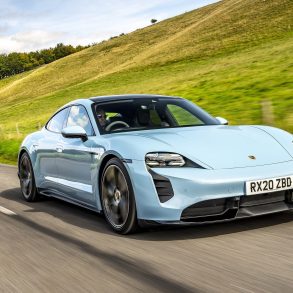
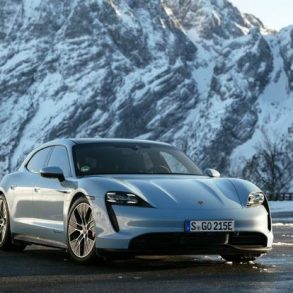
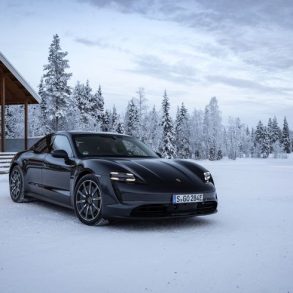
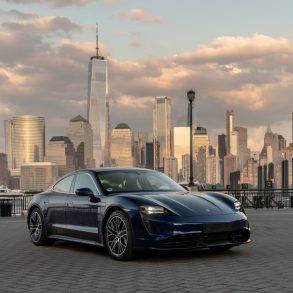
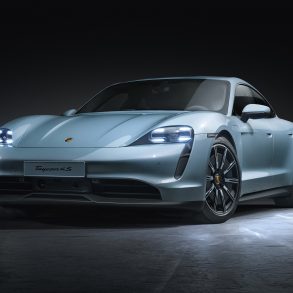
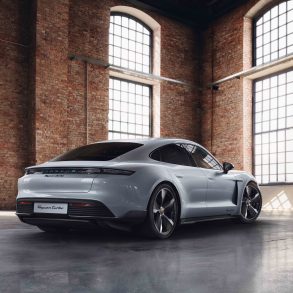
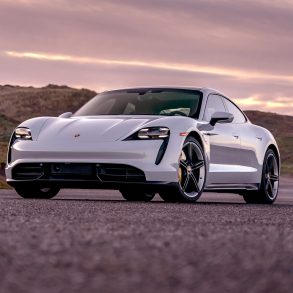

There is no shortage of Porsche Taycan video reviews on the internet. We curated the best Taycan reviews, POV driving sessions and on-track videos and share them below.
Great question — those internal model codes (like 9J1, Y1A, and Y1B) are part of Porsche’s internal vehicle identification system. They're not typically advertised, but they’re very useful for enthusiasts, parts ordering, VIN decoding, and identifying generation-specific differences. 9J1 is the main model code for the first generation Taycan. Y1A vs. Y1B cleanly separates sedan vs. wagon models. Y1A means the sedan shape, while Y1B means the wagon bodies.
The Porsche Taycan isn't exactly not selling—it remains one of the best-selling EVs in the premium performance segment—but its sales have seen a slowdown in certain markets, and there are a few reasons behind that:
EV Market Headwinds: The entire EV sector has been experiencing a plateau in growth, especially in North America and parts of Europe. Consumer demand for EVs has softened slightly due to high interest rates, waning government incentives, charging infrastructure concerns, and rising competition from more affordable brands.
Price and Positioning: The Taycan is a high-end, performance-focused EV with a premium price tag. Even the base model is significantly more expensive than mainstream EVs like the Tesla Model 3 or Model Y, which offer more practicality for less money. This narrows the Taycan's buyer pool to enthusiasts or luxury EV shoppers—and many of them are now looking at alternatives like the Lucid Air or updated Teslas.
Range Perception: Although Porsche improved range significantly in the 2025 update, earlier Taycan models often had lower EPA-rated range numbers compared to rivals. Even if real-world performance was better, perception matters, and some buyers may have been hesitant to commit to a $100K+ EV with a sub-250-mile EPA range.
Charging Curve Nuance: While the Taycan’s 800V architecture allows for incredibly fast charging (up to 270–320 kW), that performance is only achievable on ultra-fast chargers—which are still not widespread. In day-to-day use, buyers may not always see that advantage.
Model Overlap: Within Porsche’s own lineup, the Taycan overlaps in price and purpose with cars like the Panamera, which offers longer range and more traditional luxury, and now the electric Macan, which is newer, more spacious, and less expensive in some trims.
That said, the 2025 refresh has addressed many of these concerns—especially range, performance, and efficiency. It remains to be seen whether this will reignite Taycan sales or whether broader EV market dynamics will continue to challenge it.
While the updated 2025 Porsche Taycan models have been officially announced and are currently on sale, it's important to understand that inventory of the 2024s may still be around on dealer lots. The most reliable way to know what's currently available for immediate purchase is to contact your local Porsche dealerships directly. Their websites or sales teams can provide real-time information on their current inventory, including whether they have 2025 models in stock or when they expect to receive them. Porsche's official website usually allows you to configure the latest model year vehicles so you can spec the current range. This can give you an idea of the models currently being produced, even if immediate delivery from dealer stock isn't available.
The Porsche Taycan's value retention is a complex issue with varying perspectives.
Significant Initial Depreciation: Some reports indicate a substantial depreciation in the early years, particularly for higher-spec models like the Turbo and Turbo S. For example, a Jalopnik article from February 2024 highlighted Taycan Turbos losing up to $100,000 in value within four years.
Percentage-Based Depreciation: Kelley Blue Book data from January 2025 shows a 2022 Porsche Taycan depreciating around 45% in three years. This puts it in the higher percentile for depreciation among 2022 sedans. Another KBB report from February 2025 indicates a similar depreciation rate of 45% for a 2021 model after two years.
Luxury EV Norm: Some argue that the Taycan's depreciation aligns with typical rates for high-value luxury cars and electric vehicles, which tend to depreciate faster than mainstream internal combustion engine (ICE) vehicles due to rapid technological advancements and evolving market dynamics.
Slowing Depreciation: More recent analysis from April 2025 suggests that Taycan depreciation rates have come down and are now more in line with the broader luxury car segment.
Factors Influencing Value Retention:
Brand Reputation: Porsche's strong brand image for luxury and performance can help mitigate value loss compared to some other brands.
Market Demand for EVs: The increasing interest in electric vehicles could support the Taycan's resale value, although this is also subject to competition from new and upcoming EVs.
Technology Advancements: The rapid pace of EV technology can lead to earlier models becoming less desirable, impacting their value. Newer Taycan models with improved range and charging capabilities (like the 2025 update) might hold their value better than older ones.
Battery Health and Warranty: Concerns about battery degradation and the remaining warranty period are significant factors for potential buyers of used EVs, influencing resale value. Porsche offers an 8-year/100,000-mile warranty on the battery.
Condition and Mileage: As with any car, the Taycan's physical condition and mileage will significantly affect its resale value.
Market Conditions: Overall economic conditions and the supply and demand for used luxury EVs play a crucial role in depreciation.
Model and Options: Higher-performance trims and extensive options might depreciate more in absolute terms due to their higher initial cost, although the percentage depreciation could vary. Some argue that options depreciate almost entirely over a few years.
Based on the available information, the Porsche Taycan appears to experience a significant depreciation in its initial years, much higher than other Porsche models and aligning more with the trend observed in the luxury EV market. However, more recent data suggests that depreciation rates might be stabilizing. The long-term value retention will depend on factors like technological advancements, battery longevity, market demand for used EVs, and the overall reputation and desirability of the Taycan as it ages. For potential buyers, considering a used Taycan a few years old can offer significant value due to this initial depreciation. For owners, long-term retention might see a slowdown in depreciation, but it's unlikely to match the value retention of some iconic Porsche sports cars like the 911.
The range of the Porsche Taycan varies significantly depending on the specific model, battery configuration (Performance Battery or Performance Battery Plus), and the model year. Here's a breakdown of the EPA estimated ranges for the current Porsche Taycan model lineup:
Taycan (Performance Battery): 274 miles
Taycan (Performance Battery Plus): 318 miles
Taycan 4S (Performance Battery): 252 miles
Taycan 4S (Performance Battery Plus): 295 miles
Taycan Turbo (Performance Battery Plus): 292 miles
Taycan Turbo S (Performance Battery Plus): 266 miles
Taycan Turbo GT (Performance Battery Plus): 276 miles
Taycan Turbo GT with Weissach Package (Performance Battery Plus): 269 miles
Taycan 4 Cross Turismo (Performance Battery Plus): 277 miles
Taycan 4S Cross Turismo (Performance Battery Plus): 272 miles
Taycan Turbo Cross Turismo (Performance Battery Plus): 265 miles
Taycan Turbo S Cross Turismo (Performance Battery Plus): 261 miles
Important Considerations:
EPA Estimates are Guidelines: The actual range you experience will vary based on various factors, including driving conditions (city vs. highway, stop-and-go traffic), driving habits (aggressive acceleration, high speeds), climate control usage (heating and air conditioning), topography, and the use of accessories.
Real-World Range: Many owners report that the real-world range can sometimes be higher or lower than the EPA estimates. Some early data from 2025 Taycan owners suggests they are seeing range figures that meet or even exceed the EPA estimates in certain driving conditions.
Battery Degradation: Like all electric vehicle batteries, the Taycan's battery will experience gradual capacity loss over time and with usage. Porsche expects the majority of vehicles to retain at least 70% of their original capacity within the first 8 years or 100,000 miles.
Previous Model Years: Keep in mind that the range figures for previous model years (e.g., 2020-2024) will differ. The 2025 models have generally seen improvements in battery technology and efficiency, leading to increased range compared to earlier Taycan versions. For example, the 2024 Porsche Taycan had a maximum EPA estimated range of 246 miles.
Here's a breakdown of the 0-60 mph (0-97 km/h) acceleration times for the current Porsche Taycan model range:
2025 Porsche Taycan 0-60 mph Acceleration (with Launch Control):
Taycan (Performance Battery): 4.5 seconds
Taycan (Performance Battery Plus): 4.5 seconds
Taycan 4 Cross Turismo: 4.5 seconds
Taycan 4S (Performance Battery): 3.5 seconds
Taycan 4S (Performance Battery Plus): 3.5 seconds
Taycan 4S Cross Turismo: 3.6 seconds
Taycan GTS: 3.1 seconds (0-100 km/h)
Taycan Turbo: 2.5 seconds
Taycan Turbo Cross Turismo: 2.6 seconds
Taycan Turbo S: 2.3 seconds
Taycan Turbo S Cross Turismo: 2.4 seconds
Taycan Turbo GT: 2.2 seconds
Taycan Turbo GT with Weissach Package: 1.9 seconds (This is the first production car Car and Driver ever tested to break the 2-second 0-60 mph barrier with a 1.89-second run with rollout)
The charging time for a Porsche Taycan depends on several factors. Most important is the charger type and power and to lesser degree charging conditions. Conditions including factors like the initial state of charge, battery temperature, and the charger's maximum output can slightly affect charging times. The Taycan has battery preconditioning features to optimize charging speed, especially in colder temperatures.
For charger type and power, there are three broad buckets.
Level 1 (120V AC): These are standard household outlets and provide the slowest charging speed, adding only a few miles of range per hour. They are primarily for topping off or emergency use. A full charge using a Level 1 charger can take many hours (potentially overnight or longer).
Level 2 (240V AC): These chargers are typically installed at home or found at public charging stations. They offer significantly faster charging speeds. The Taycan comes standard with an 11 kW onboard AC charger. With a 240V outlet and a Level 2 charger, you can achieve a full charge in: Performance Battery (around 83.6 kWh usable): Approximately 11.5 hours with a 9.6 kW charger. Performance Battery Plus (around 97.0 kWh usable): Approximately 13 hours with a 9.6 kW charger. An optional 22 kW onboard AC charger is available, which can halve these charging times if connected to a 22 kW AC source.
DC Fast Chargers: These high-power chargers are found at public charging stations along highways and in urban areas. The Porsche Taycan, with its 800-volt architecture, can take advantage of very high charging speeds. Maximum Charging Power: The 2025 Taycan can charge at up to 320 kW at compatible 800-volt DC fast-charging stations. Charging Time (10% to 80%): In ideal conditions, charging from 10% to 80% at a high-power DC fast charger can take as little as 18 minutes. 150 kW DC Chargers: If connected to a 150 kW DC fast charger, the 10% to 80% charge will take around 33 minutes.
The Taycan is available with two battery options: the Performance Battery and the Performance Battery Plus. The Performance Battery has a smaller capacity, resulting in slightly faster charging times for a full charge compared to the Performance Battery Plus. For the current models, the usable capacity for the standard battery is around 83.6 kWh, and the Performance Battery Plus has a usable capacity of about 97.0 kWh.
Join Our Porsche Community
Sign up for our weekly Porsche newsletter. The latest Porsche news, rumors, reviews and more delivered to your inbox. Cool Porsche stuff perfect for the flat-six obsessed.